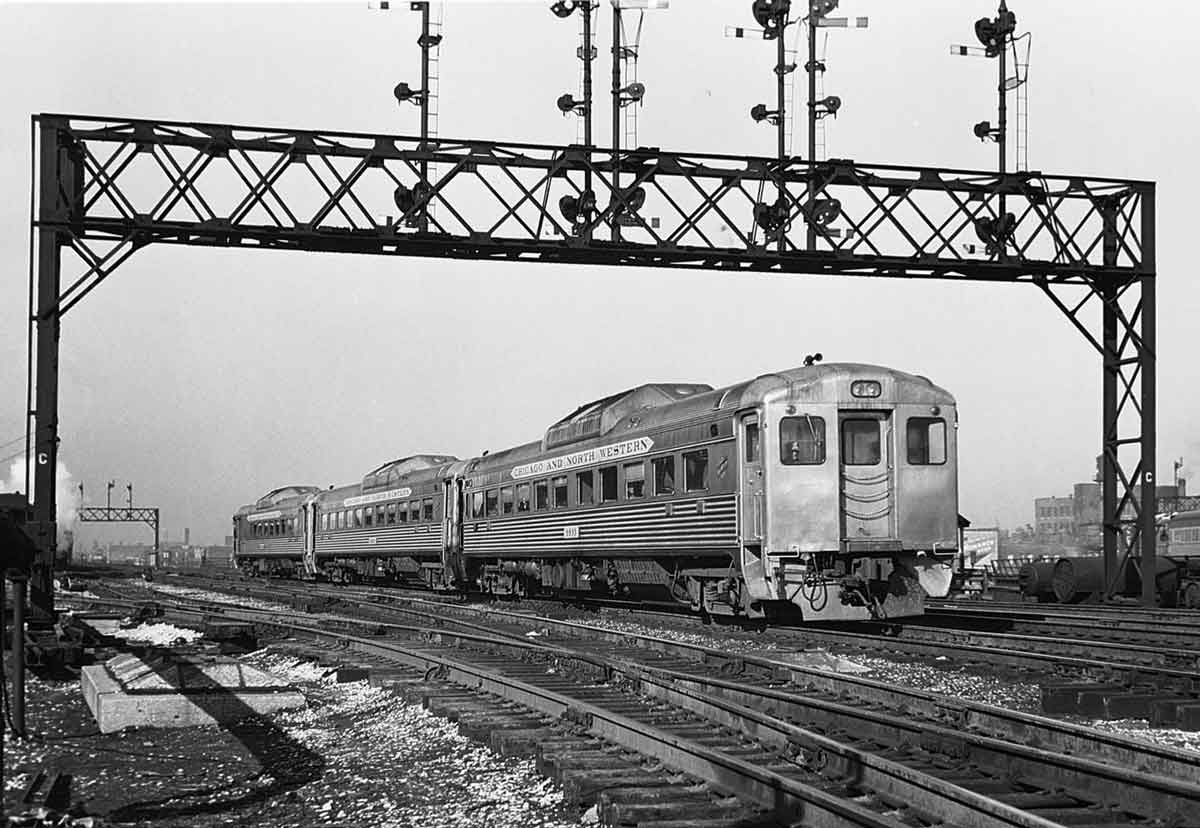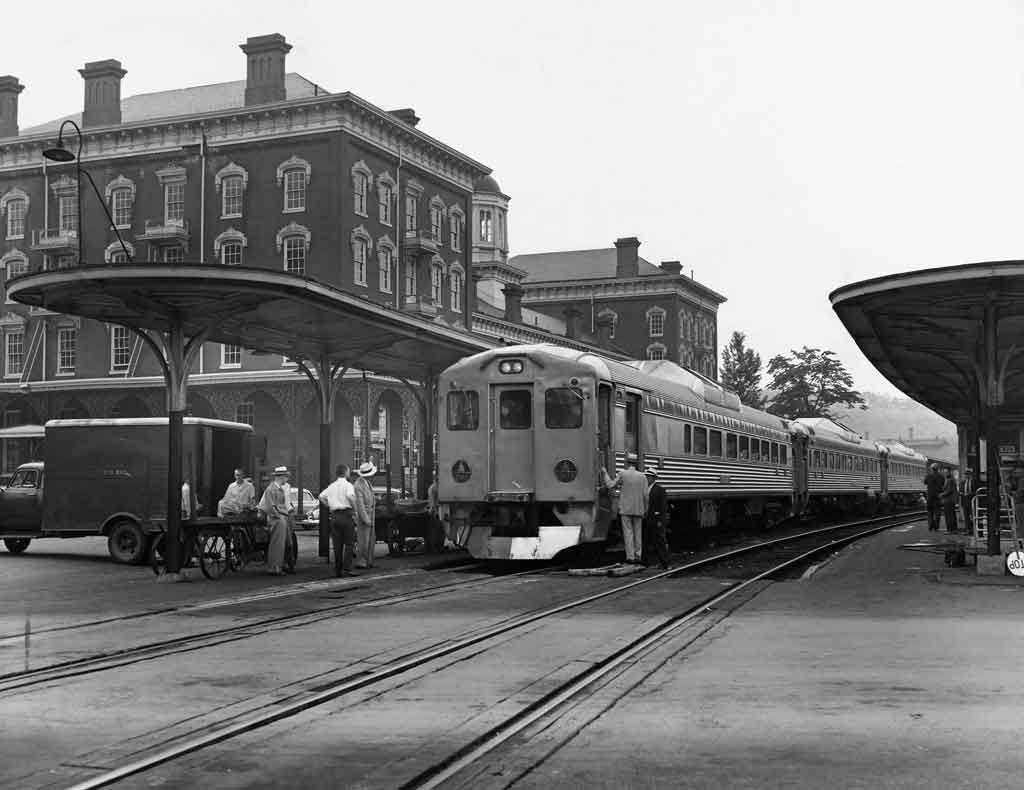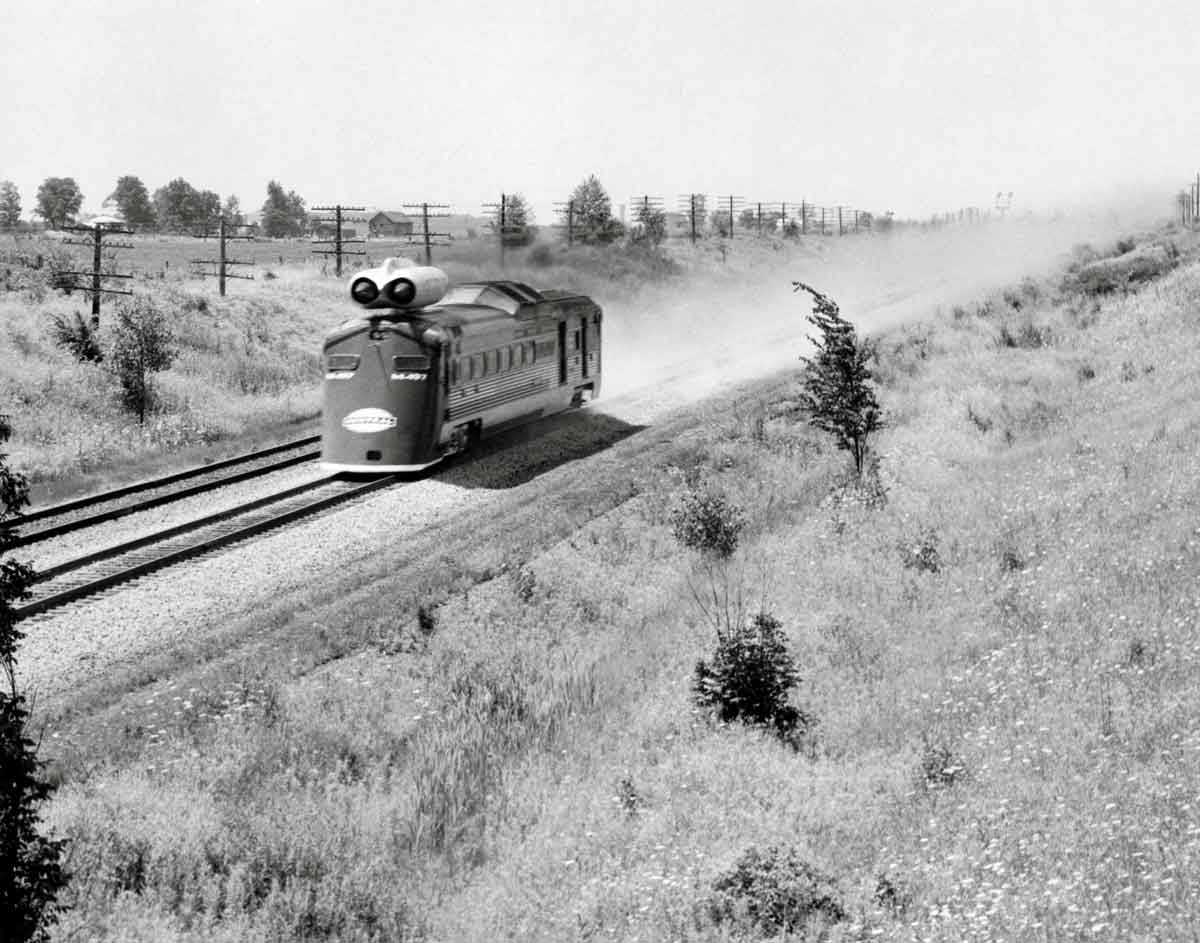The Rail Diesel Car (RDC) was the Budd Co.’s answer to declining passenger traffic during the post war.

The demonstrator was introduced on Sept. 19, 1949, at Chicago Union Station. As described by Trains’ Editor David P. Morgan in the November 1949 issue, this new rail-motor car was a combination of prior self-propelled technology, stainless-steel styling, modern amenities, and relative simplicity.
The basic design utilized a coach-like body of either 85 feet or 73 feet, 10 inches in length with rounded edges at each end for aerodynamics. The reinforced underframe held a pair of General Motors’ Detroit Diesel 110 series engines at 275 hp, along with a hydraulic torque-converter transmission, drive shaft, auxiliary equipment, fuel and air tanks, and batteries. Radiators and exhaust systems were mounted on the roof and covered in shrouding to match the streamlined appearance.

Five model types of the RDC were manufactured with multiple interior arrangements for passengers, baggage-express, and mail. Inside the center of the car was a bulkhead of concealed pipes connecting the roof and underframe equipment. All but one model type had engineer stations on the right-hand side of the vestibule at each end with the control stand set up on a shelf to reduce passenger interference.
Even with a strong advertising campaign from Budd with an earlier slogan, “Revolution on Rails,” sales on the RDCs were initially slow due to skepticism. They eventually won over the railroads, which were looking for alternative equipment for the struggling secondary, branch line, and commuter services. Flexibility and reduced costs in operations allowed for a two-man crew — engineer and conductor — running the RDCs as either a single unit or multi-car trainset. Bi-directional operations, thanks to the control stands, eliminated the need for a turning facility. Modern heating and cooling systems in the passenger compartments highlighted modern comfort for riders.
Much like the impressive acceleration at a top speed of 83 mph, manufacturing of the RDCs briskly picked up with a total of 398 built. The Boston & Maine Railroad had the largest fleet of 109 cars for commuter service out of Boston – nicknamed Highliners. Other significant ownerships in North America included the New Haven (Shoreliners), New York Central(Beeliners), Baltimore & Ohio (Speedliners), Canadian Pacific (Dayliners), and the Western Pacific(Zephyrettes). International exports were also made for operations in Cuba, Brazil, Australia, and Saudi Arabia. A 1956 “New Look” for the RDC showcased a redesigned front end and pilot, standardized wheels, and improved air conditioning. Production officially ended in 1962.

Notable bookmarks in the cars’ history took place before and after the production’s conclusion. The experimental Roger Williams — a six-car trainset of modified RDCs with a locomotive-style cab at each end — operated from 1957 to 1971, initially for the New Haven’s Boston-New York service. In 1966, car M497 of the NYC was fitted with a pair of General Electric’s J-47 jet engines for a test run in northwest Ohio, rocketing up to 183 mph.
The continual decline in U.S. passenger rail by the 1970s scattered many of the out-of-date RDCs across Canada for extended use. Most survivors still in operation today are typically found at tourist railroads and museums with many finding their way back to the states. The few still in regularly scheduled service can be found on Westside Express Service (WES) Commuter Rail in Portland, Ore., and VIA Rail Canada’s Sudbury-White River line in Ontario.
